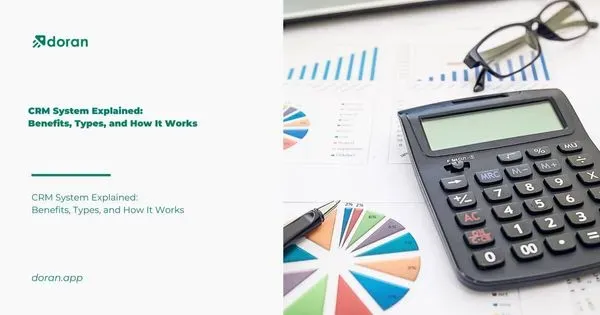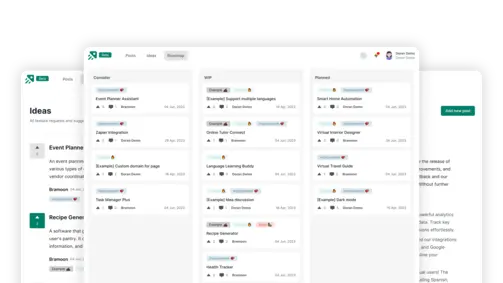Using CES Customer Journeys: Guide to Effortless Crafting
Create changelog and product roadmap for your product
Explore nowTable of contents 7 min
In today’s competitive business landscape, understanding and optimizing the customer journey is essential for enhancing customer satisfaction and loyalty. Customer Effort Score (CES) is a powerful metric that can provide insights into how easy or difficult it is for customers to interact with your business. In this article, we will look into the significance of using CES customer journeys. We will explore how measuring customer effort at various touchpoints can help businesses identify friction points, streamline processes, and create a seamless customer experience that drives long-term loyalty and satisfaction.
Customer Journey: A Comprehensive Understanding of Stages

The customer journey is a sequence of steps in the sales process that starts with awareness and ends with advocacy. A unique strategy and customized communication are needed for each step of using CES customer journeys.
Every conversation and engagement a customer has with your brand, beginning with their first impression, affects their experience as a whole. By identifying typical problems and selling points, customer journey analysis provides you with the knowledge you need to improve sales procedures and increase customer satisfaction.
The customer journey is divided into three or eight stages, depending on who you ask; nevertheless, five is the most commonly acknowledged. What are the five stages that are worth considering using CES customer journeys, then?
Awareness
At this point in using CES customer journeys, prospective clients are aware that they have an issue to resolve or a goal to accomplish and are trying to learn about the solutions that are out there. It’s possible that they learned about your brand from advertising, social media, web searches, or word-of-mouth.
Consideration
Following some preliminary investigation, clients are better aware of their expectations and available options. They’ve now reduced the number of competitors on their list to a small number, and in order to decide, they’re looking for more specific details and quotes. They are thinking about your brand actively.
Decision
Best wishes! The sale was made by you. The customer discovered your brand, researched your products, and decided to purchase them. Although it may seem like the adventure is coming to a conclusion, we are far from finished.
Retention
It’s time to fulfill the commitments you made to the customer during the sales process now that you’ve gained their trust. In the business-to-business (B2B) sector, it is essential that you support and encourage your client to use your good or service in order for them to get value. If all goes according to plan, this customer will make more purchases, increasing the customer lifetime value. This includes everything you do in the B2C market to maintain brand awareness and encourage repeat business.
Advocacy
Happy consumers refer business to friends and family in addition to renewing or repurchasing. These days, you have the chance to profit from consumer referrals, endorsements, and testimonies. Regretfully, the opposite is also accurate in using CES customer journeys. Customers’ unfavorable opinions may deter others from making purchases if they are dissatisfied (particularly if they post a poor review online).
What is CES?

The purpose of NPS analysis is to determine how likely a consumer is to refer your brand.
NPS surveys use a scale of 0 to 10 to identify overall brand performance by measuring promoters (ratings of 9 or 10), detractors (ratings of 6 or lower), and passives (ratings of 7 or 8). Subtracting the percentage of promoters from the percentage of detractors yields your NPS. Typically, questions are formatted as follows:
How likely are you, on a scale of 0 to 10, to suggest [brand, product, service, etc.] to a [friend, coworker, family member]?
Read more: CES in the Age of Automation & AI: Future-Proofing Customer Experience
Using CES customer journeys: How to combine CES and Customer Journey to better Understand your Customers

Keep an Eye on Modifications throughout Time
You may see shifts in customer sentiment and feedback over time by comparing data collected from your NPS, surveys at various points in time.
To gauge the effectiveness of your efforts to enhance a certain stage, you may wish to analyze feedback from that stage over time if you’re trying to improve your customer journey. For instance, you may examine NPS survey results obtained subsequent to a person’s initial customer relationship. You can learn how modifications to your onboarding or checkout processes have been received by tracking changes in survey responses from quarter to quarter.
This is also true when attempting to ascertain whether a product or customer service enhancement has improved your customer journey in the desired ways of using CES customer journeys. In this scenario, surveys would be distributed both before and after adjustments were made, and the two data sets produced from each survey would be compared to see how the rating scores and overall satisfaction of respondents had changed.
Find out more: How CES Impacts Customer Lifetime Value
Divide into Various Customer groups
It’s critical to identify the factors that drive customer churn, convert consumers into brand evangelists, or explain why your products and brand appeal to certain demographic target categories.
It could be helpful to you to know what moves a customer from contemplation to decision to buy in using CES customer journeys. This will explain how consumer opinion changes from purchasing to endorsing or criticizing a product, i.e., what drives customer satisfaction. Are potential consumers frequently choosing not to buy because a competitor is offering a lower price throughout the decision-making stage? To better express value, think about cutting costs or changing the way you communicate.
Despite the fact that these surveys only have one or two questions, you may categorize survey data according to consumer geography or demographics by adding existing data points from your CRM system to enhance responses. Understanding how various customer segments feel at the same point in the customer journey is made easier with the use of demographic segmentation.
To give an example, consider contrasting the factors that influence a millennial to suggest your brand to a friend or family member with those of a member of generation Z or generation X.
How to deal with Reactions, both positive and negative
You can identify the factors that influence good and bad ratings by contrasting the qualitative unstructured replies that go along with positive NPS ratings with those that go along with negative ones in using CES customer journeys. Once you’ve identified the WHYs underneath the WHATs, you can enhance and highlight the aspects of your business, service, or product that customers currently find appealing and, if needed, make the required adjustments and upgrades.
A negative customer service experience or trouble getting a response to a product query could be the only thing preventing a prospect from going on to the retention and/or advocacy stage once they have become customers and are purchasing your goods or service.
By identifying pain areas and making the necessary adjustments, you may enhance customer experience, boost customer loyalty, and raise the possibility that consumers will become brand ambassadors.
In conclusion, using CES customer journeys analysis can offer valuable insights into areas that need improvement. By measuring and reducing customer effort at key touchpoints, businesses can enhance the overall customer experience, leading to increased satisfaction and loyalty. Embrace the power of CES to create a more seamless and enjoyable customer journey, and watch your business thrive in a competitive market by prioritizing ease of use and customer convenience.
What to not miss out on our blog
Gain insightful knowledge and invaluable experiences from dedicated experts.

CRM System Explained: Benefits, Types, and How It Works
Discover everything about CRM system. Learn the benefits and how a CRM system works to improve customer relationships and streamline business operations.

Are you ready? Start your free trial today.
Enhance communication, keep track of the progress, understand customers' insight and more by taking your first trial on Doran.
Sign up for free

